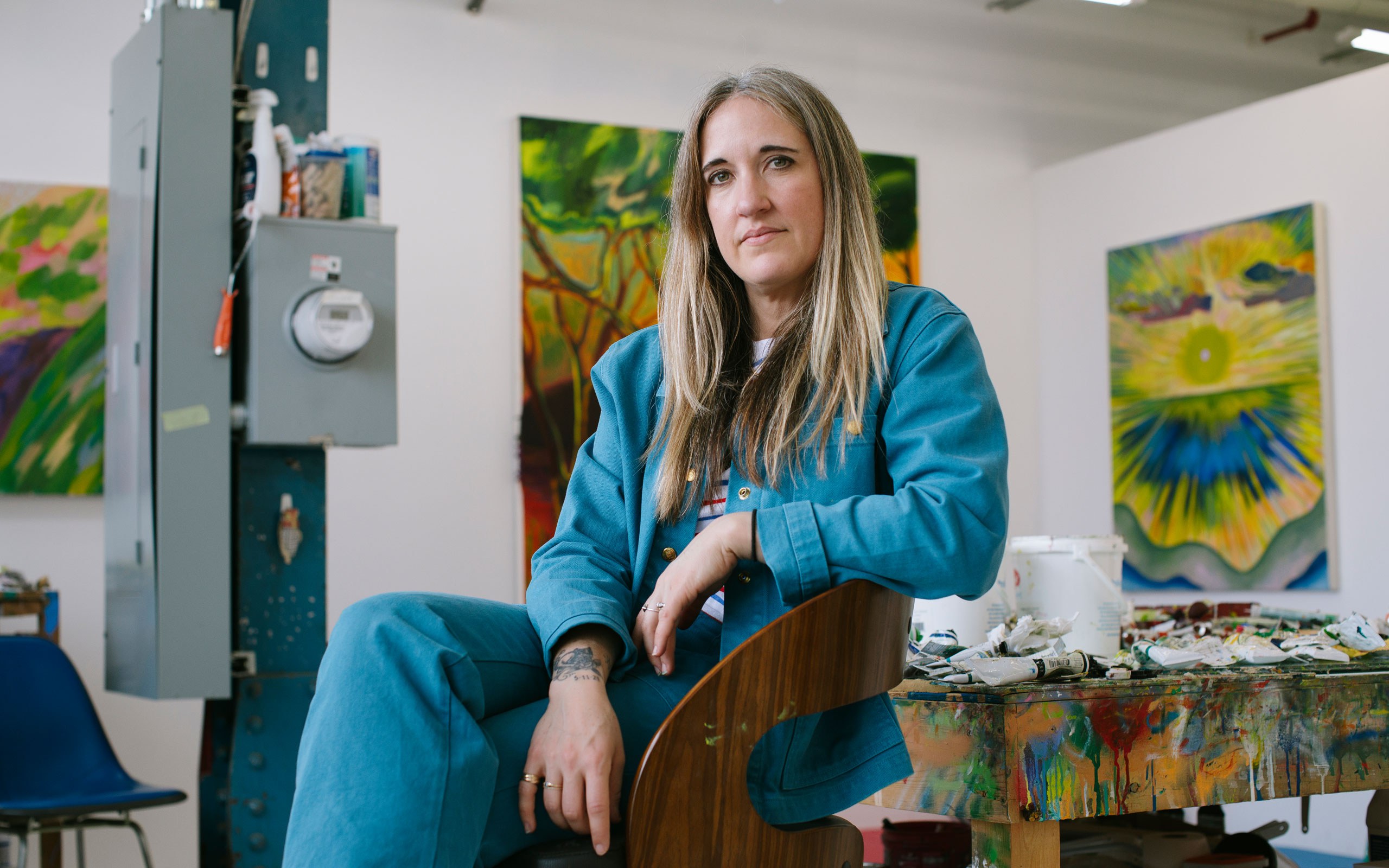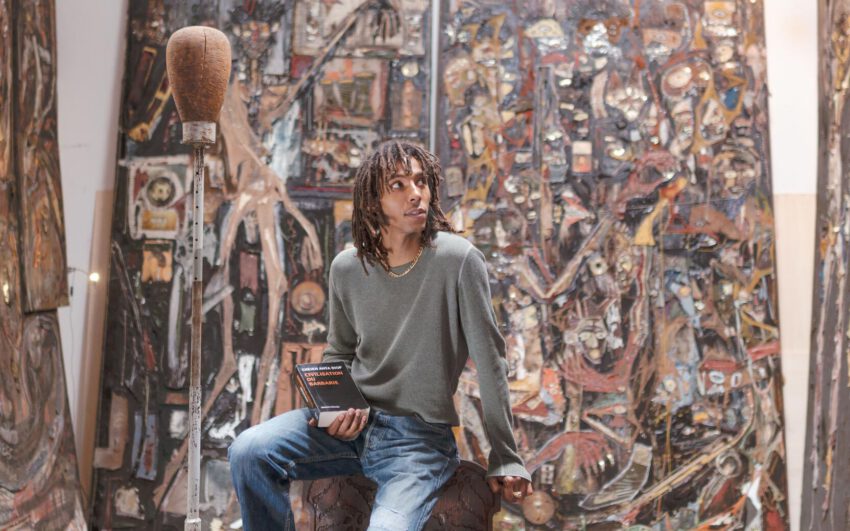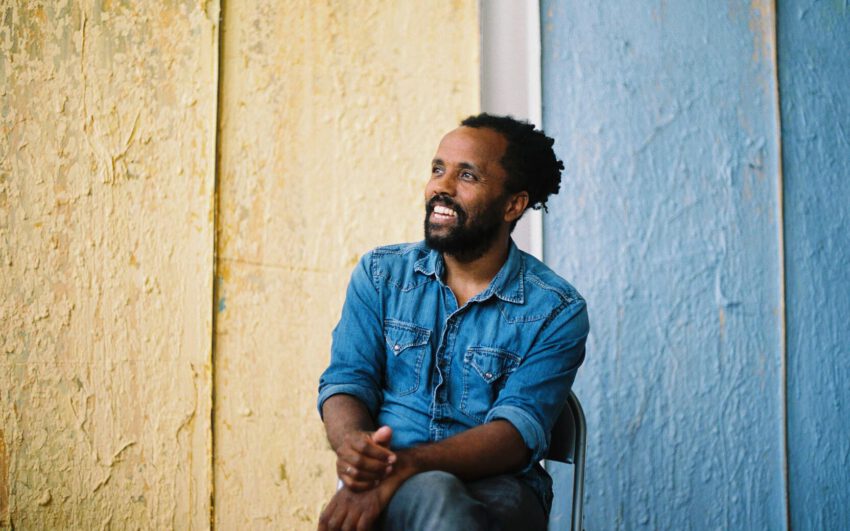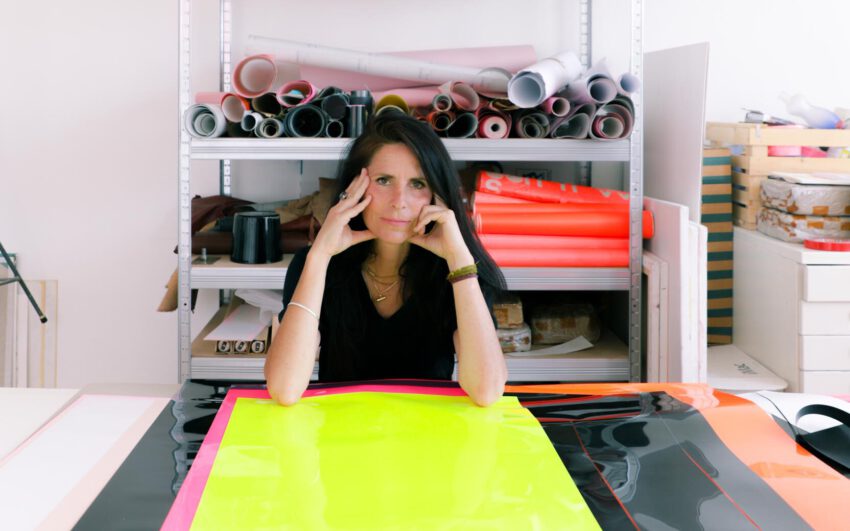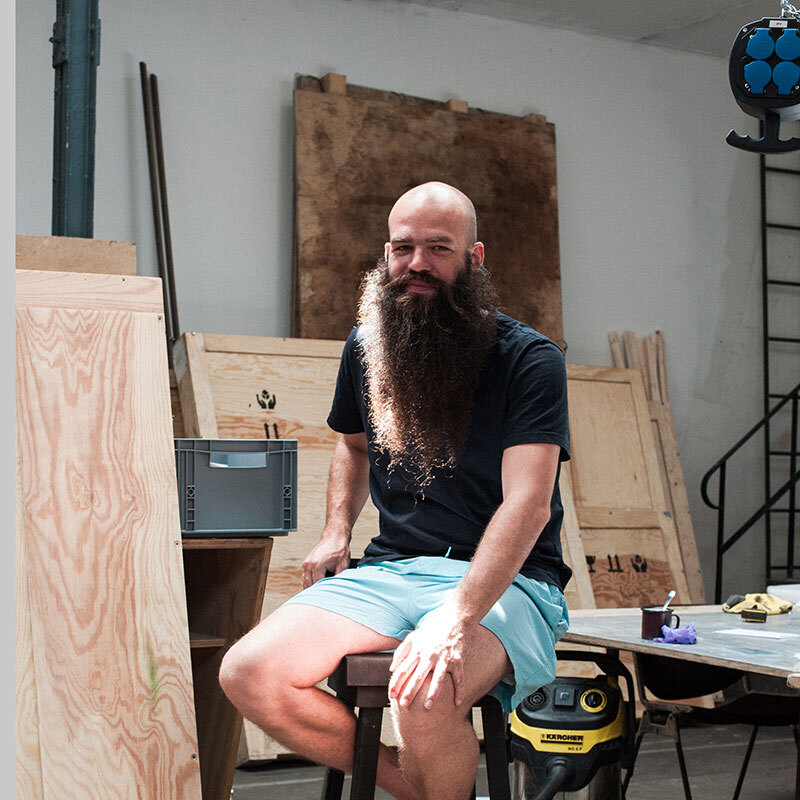Shara Hughes is an American painter based in Brooklyn, and is known for her lush, vibrant, imaginative landscapes. These do not root in any outside reference, but rather in her exploration of shape, form and light. The narrative in her work is subtle; it is open to interpretation, but ultimately deals with the nature of her actions, reactions and emotions. Hughes calls her mostly large and vertical canvases invented or psychological landscapes – offering a colorful, kaleidoscopic vision of a painter’s interior.
Shara, how did you get into painting?
I was always interested in working with my hands. It started with some drawing classes at the local college in high school – my parents said: “This is not a profession! Could she not become a doctor?” (laughs). Then I was accepted at the Rhode Island School of Design; I learned how to start my studio practice, and how important discipline and motivation are. Basically, you never stop working! Later, I did some artist residencies, putting myself in new places with new people, learning to rely on myself.
You refer to travelling as a way of getting to know yourself – but have the different cities you were staying at not influenced you at all?
Sure, and more so as I get older. When I was young, I was so shy, all I wanted was to be in my own space and make things. It was helpful for me to zoom out of myself and see how I am and zoom back in. When I make a painting, I can dive in, lose myself and feel at home in it.
Is that the reason why at the beginning of your career you painted mainly interiors: to make you feel at home?
I started the interiors when my parents were getting a divorce, when I did not really know where my home was. So yes, I was creating my own homes, really solidifying a place for myself. It was symbolic, I used it to learn and try out different styles and techniques. Eventually I just moved outdoors, and my work really opened up.
You never went back to interiors?
Not really. I had a brief moment between interiors and landscapes when I was putting figures in my work, around 2014. However, the minute I gave up on the subject matter and the figure being inside, I could let go of the narrative. And that took me outdoors. There is still narrative in my work, but it is not so heavy. It is more a psychological kind of narrative, more about how I am reacting to a relationship or to what is going on in the world.
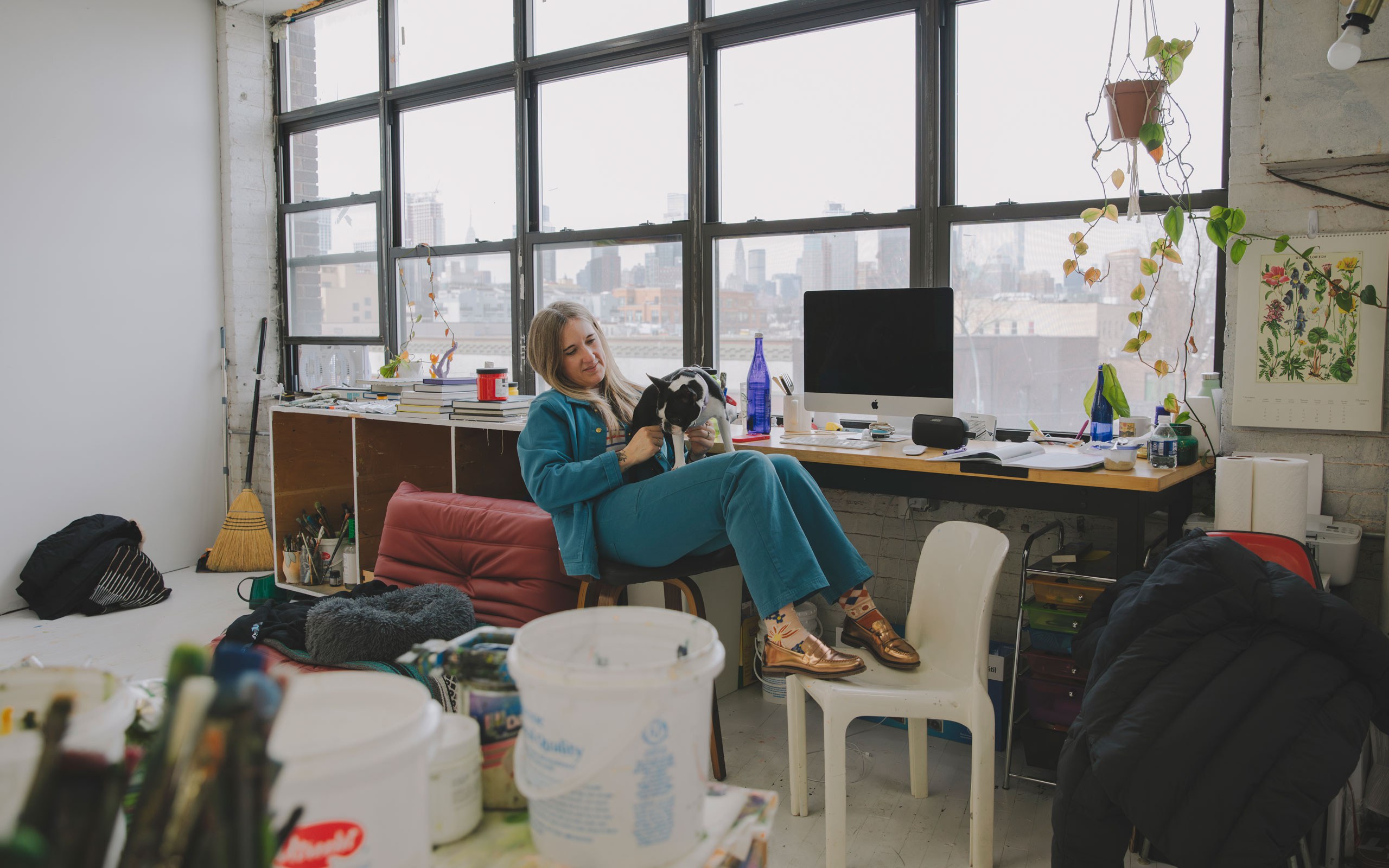
Why don’t you need people in your paintings?
Because each viewer brings their own personality to what they are seeing. The work then becomes about identity, about who these people in the picture are, why they are there. It feels constricted to me.
Would you call yourself a landscape painter?
In a casual conversation, yes. But they are obviously not landscapes to me. They are interior landscapes.
It’s funny – you moved away from painting interiors, but your landscapes are still interiors: your own!
Totally! But that wasn’t the plan. It was more of a protest because I was tired of doing paintings of the inside. There was this concrete moment I remember, when I was not having any shows, nothing coming up, and I could do anything I wanted. The interiors had started feeling like I was planning them too much. And from a personal point of view, I was over my parent’s divorce. I thought: “I am not unhappy. So why do I keep coming up with these sad memories?” It felt like I kept trying to evoke this tragedy to make my paintings work.
Along the cliché of the tortured artist?
Yes. I wanted to get past that and thought: “If I could do landscapes – which is such a traditional genre that many people think boring – and make them interesting, then I am a good artist.” And it was tough, but I was working quietly, without shows or distractions. I shut down and let myself do what felt natural. Of course, it was scary, and I made lots of mistakes until it was good.
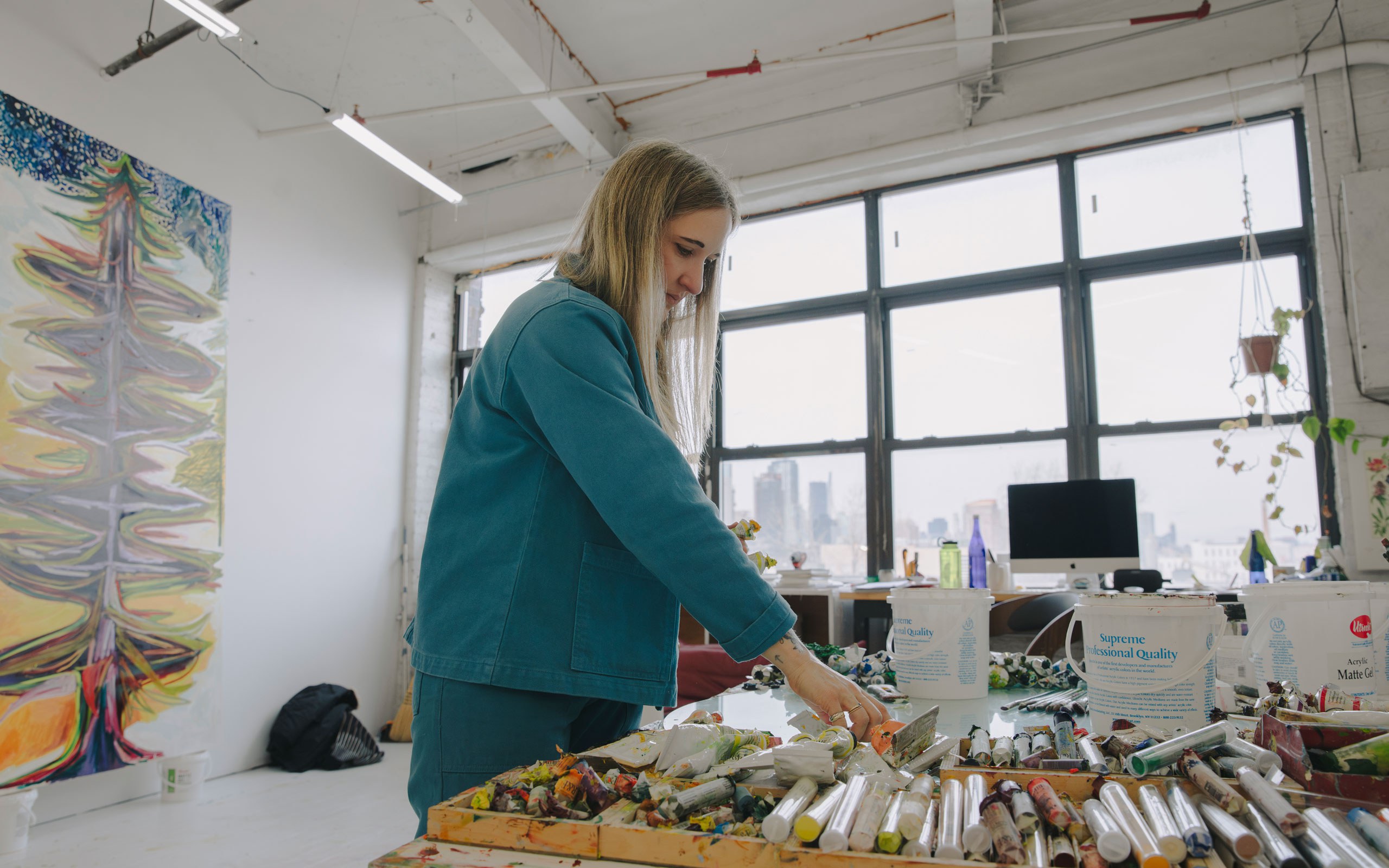
How do you start a painting?
I do not make sketches ahead of time: I just get into it and start to see the themes while I go along. I am not as structured as other artists might be, I don’t have a specific idea to start with. Basically, I want my work to feel fresh and free and not constricted. In front of the canvas, I usually start abstractedly, mixing colors on the surface, or covering the surface with one color, and then I see shapes and entries and exits within the landscape.
Isn’t it daunting to just stand in front of the blank canvas with no plan?
To me, it would feel more daunting to have a plan, because that would mean having boundaries, or even setting myself up for failure. Making a sketch feels too binding. It’s funny, because when I make a proposal for a public work, I have to present a sketch. That was the case for the mural I did in Boston, and it was very hard for me.
So how did you manage it?
I ended up making a painting as my sketch (laughs). I prefer to just make the painting the final product.
Have you always worked like that?
Yes. I trust myself more than the process. The process feels like going from A to B to C to get to D, but I want to go straight to D (laughs)! What is most exciting to me is to fail until I get the result I want. And I am comfortable with failing because I know I can fix it. Failures are like steppingstones; I rely on them to be successful.
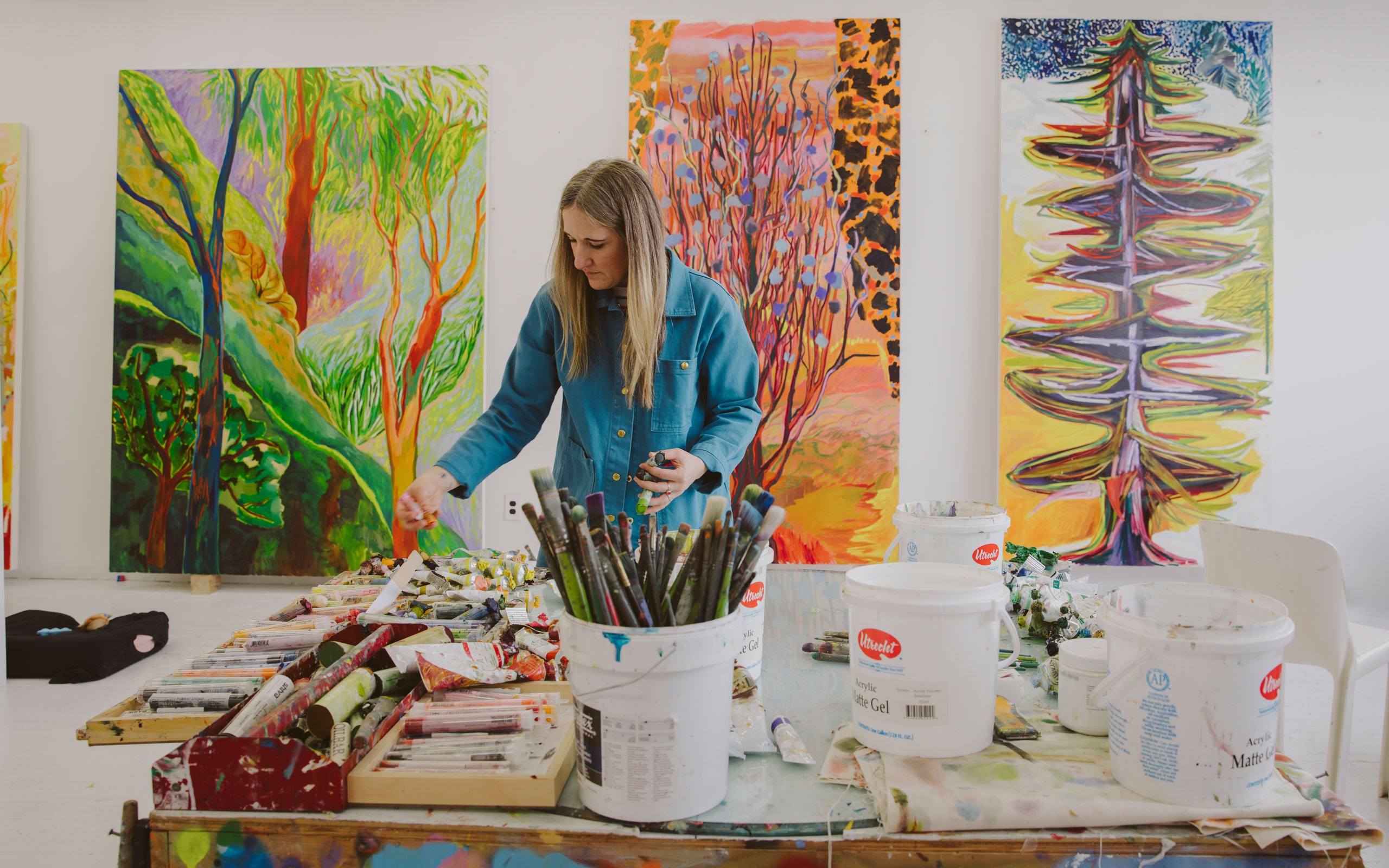
Was it hard to find your style?
So hard! When I was learning to paint in art school, I was looking at all these books; then trying to emulate Bridget Riley or Frida Kahlo. I remember people asking me: “What is your style going to be?” And I said: “I don’t know – maybe all of them?” (laughs). And maybe I took it too literally, but I really learned how to paint. How to mix styles, how to be confident, what technically will and will not work. Now I don’t even think about it. A lot of times, people now will say that my work reminds them of a certain painter, whom I might never even have heard of.
Does this annoy you?
No, it can be a compliment. But it’s an easy thing to say. I think a lot of people just use it as a means to an end to talk to me about a painting. I know talking about art can be intimidating, so I rarely take offense.
When do you know a painting is finished? They are so rich and detailed…
That can be tough. Sometimes the painting can happen really fast, and I do not trust that it is finished. On the other hand, I can go overboard sometimes. But I like having flexibility. I tend to keep the most recently finished painting around when I stretch the canvas for the next painting, and if my eye subconsciously goes back to the same point on the finished painting and tries to change it, then I know it is not finished. It is a sort of waiting room, I’m the doctor and the painting is the patient asking: “Am I healed yet?” (laughs).
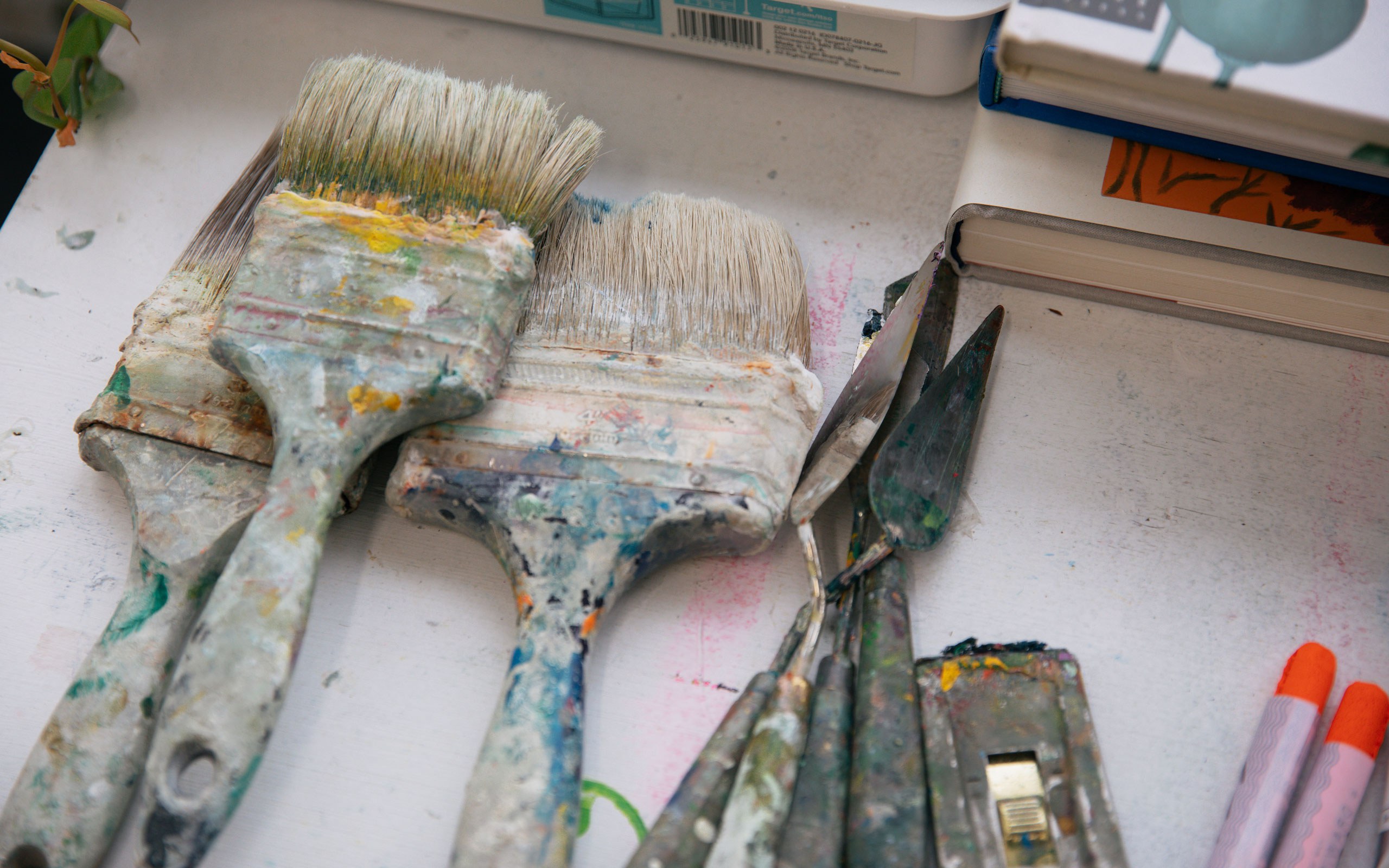
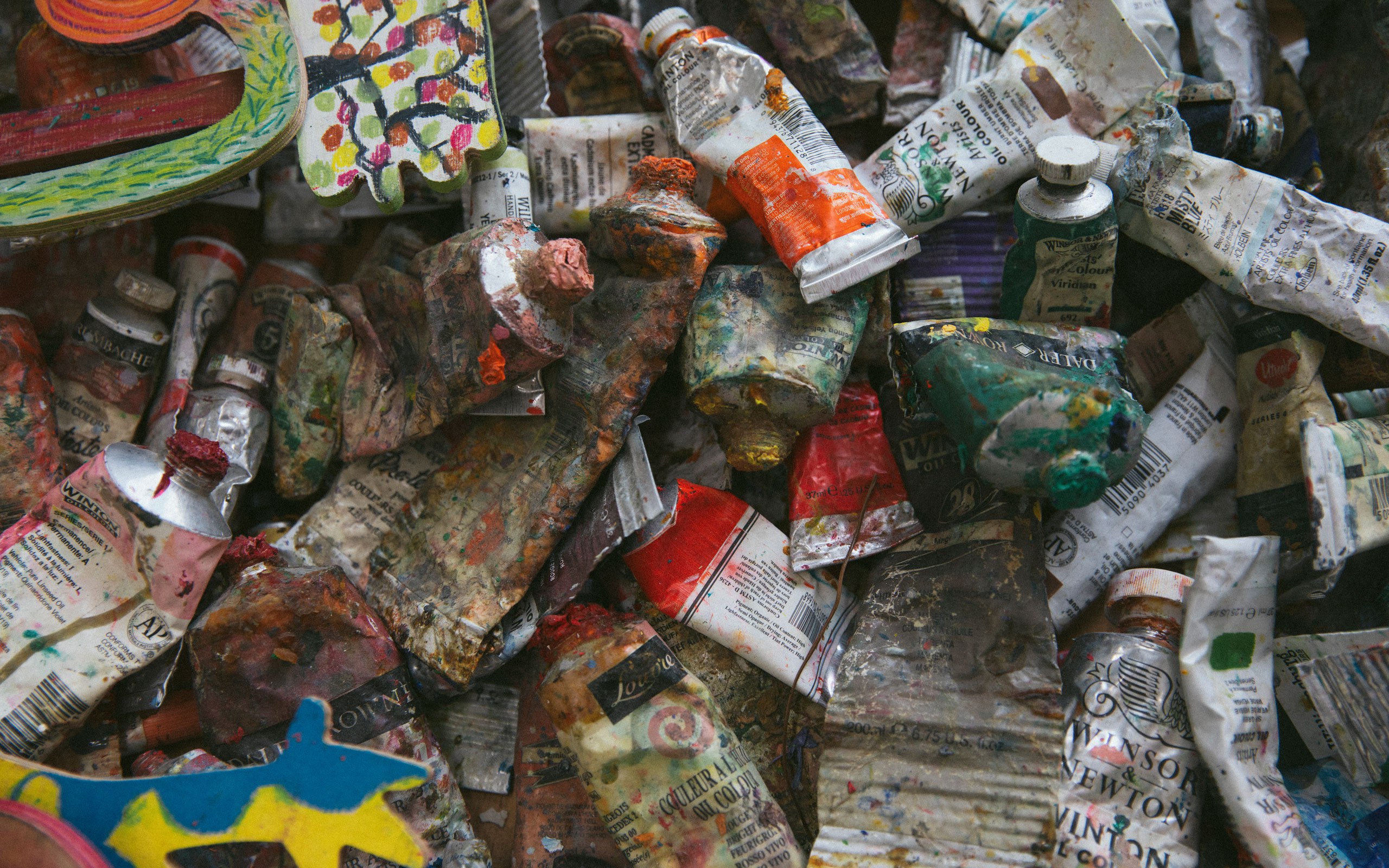
Do you ever paint from “nature”?
Not really. There is a feeling of nature that I am inspired by. But to me it is more about shapes and forms, or how the light works, not specifically about representing the alps or such. I think its ultimately about the nature of my actions, reactions and emotions.
Are your landscapes abstract then? Or teetering on the edge between abstract and cubist?
Totally! One of the paintings I just finished in my studio feels very abstract. I would love to make a seriously abstract painting, but I can’t yet. Maybe it’s not can’t, but I don’t want to yet. It’s fun to go to the edge, to have withing the same painting something very abstract but also something very recognizable.
Do you change color palettes so that your landscapes don’t look too much alike?
Yes, I do. I will clean off the palette when I move on to the next painting. I think: “I just made a yellow painting, I’m going to try to make a blue one now” - but if it turns out yellow again, that’s fine. The finished ones are usually still around my studio while they dry. I am always looking at them, but also trying not to repeat myself at the same time.
On the other hand: isn’t it important for an artist to have an identifiable style? People who buy a painting at auction for up to 2 Million USD probably want it to be by an recognizable artist… What does it actually feel like – to be “A Shara Hughes”?
Well, I’m not “A Shara Hughes” I am Shara Hughes (laughs). I guess I do not think about it too much in that way because it would seem to get away from me. Meaning the art and the name being something bigger than me somehow, even though it’s synonymous. Being identifiable is important of course, but I think it’s crucial to be true to myself as an artist who can also have the freedom to change and evolve and explore. Hopefully supporters are along for the full ride.
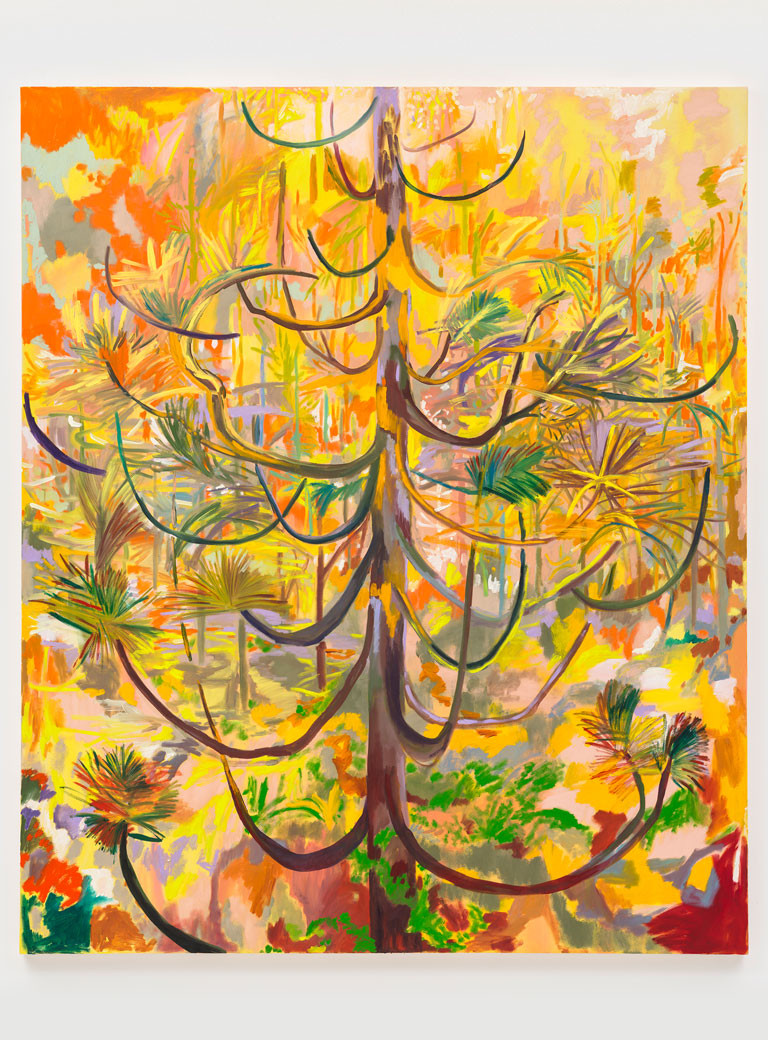
SHARA HUGHES, Branching Out, 2024, Oil, acrylic and dye on canvas, 86 x 72 in, Courtesy the artist and Galerie Eva Presenhuber, Zurich / Vienna, © the artist, Photo: Stan Narten, JSP ART PHOTOGRAPHY
As we mentioned, your paintings have been very successful at auction – does that put pressure on you?
It does. It is incredibly difficult to go through that process; because it’s out of my hands and there is not much I can do about it. I just try to get back to my studio and work. It’s not about proving the auctions right, but it’s about what I can do that is in my control. I would rather people come and see my museum shows and be more impressed with the work than focusing on the auction records. I’m hoping to be around for a long time working so I'm trying to focus on all the steps in between.
What then is success to you as a painter?
I remember how excited I was when I got my first monograph in 2018. I always wanted to be an artist with a book, something that kids would look at, that art historians would learn from. To be influential in the art world and to younger artists, that is very important to me.
Who is your perfect viewer? Who do you want to please?
I want to please myself to start with, making sure I am happy with my work! I honestly love a range of viewers – a child, an art historian, my husband.
So you don’t feel the best viewer is somebody who might get all the references in your paintings?
I think they are there for everyone. I feel art is intimidating in so many ways anyway… For instance, my closest friends from home are not artists. And I remember when I had my first show, they were so intimidated – what to wear, whether to buy tickets, what to know.
Do you feel that is why you want your paintings to feel welcoming, not intimidating?
Yes, I do. I want them to feel recognisable at first, friendly even. Even if it’s a large and powerful painting, you can identify a landscape, a sun. You won’t feel coldness or distance. I want to pull everybody in. However, my work can be tense. The color palette might be inviting, but if you look closer, it can be overwhelming. Because for me it is! It is overwhelming to be doing these paintings all the time, but I cannot stop (laughs).
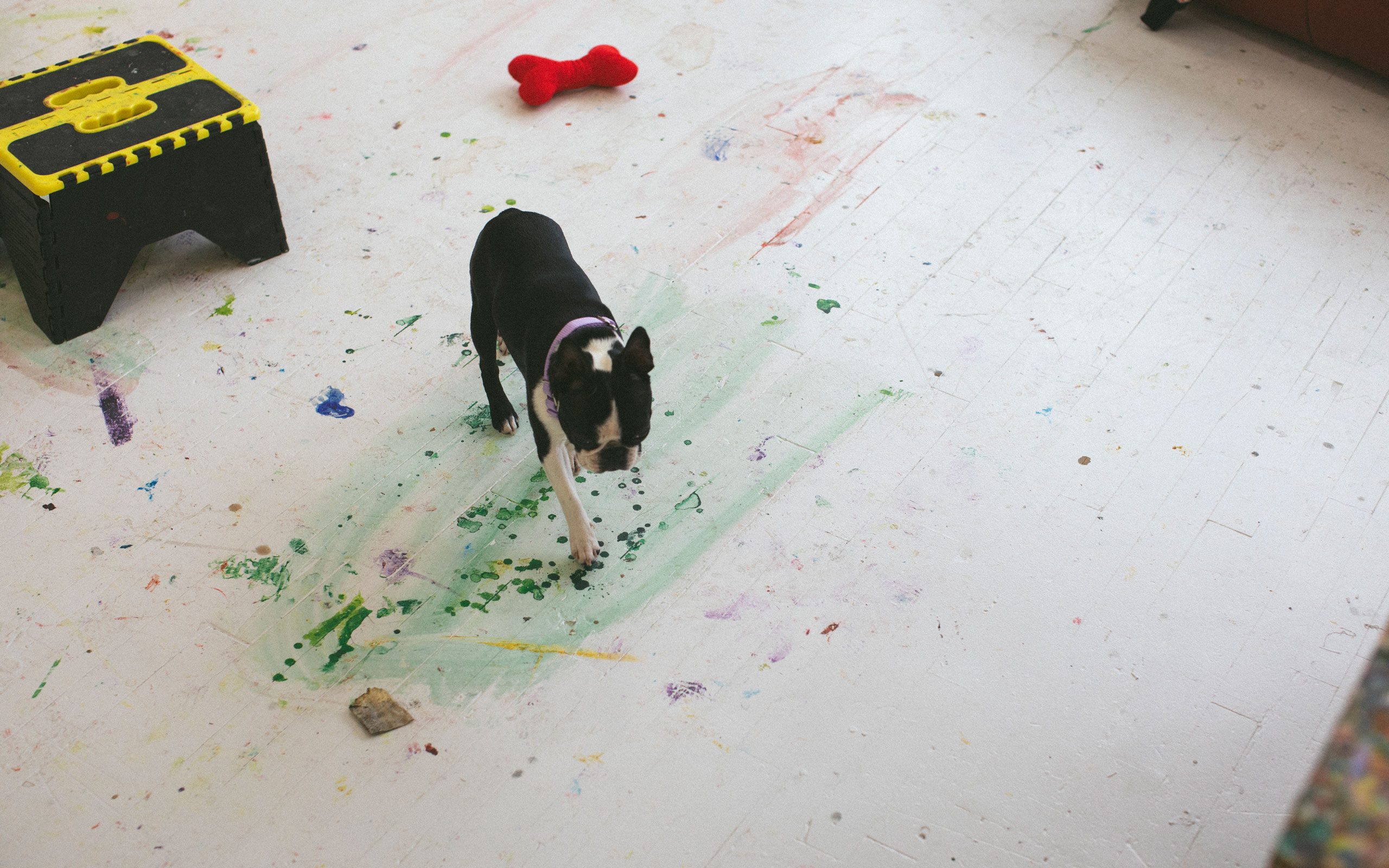
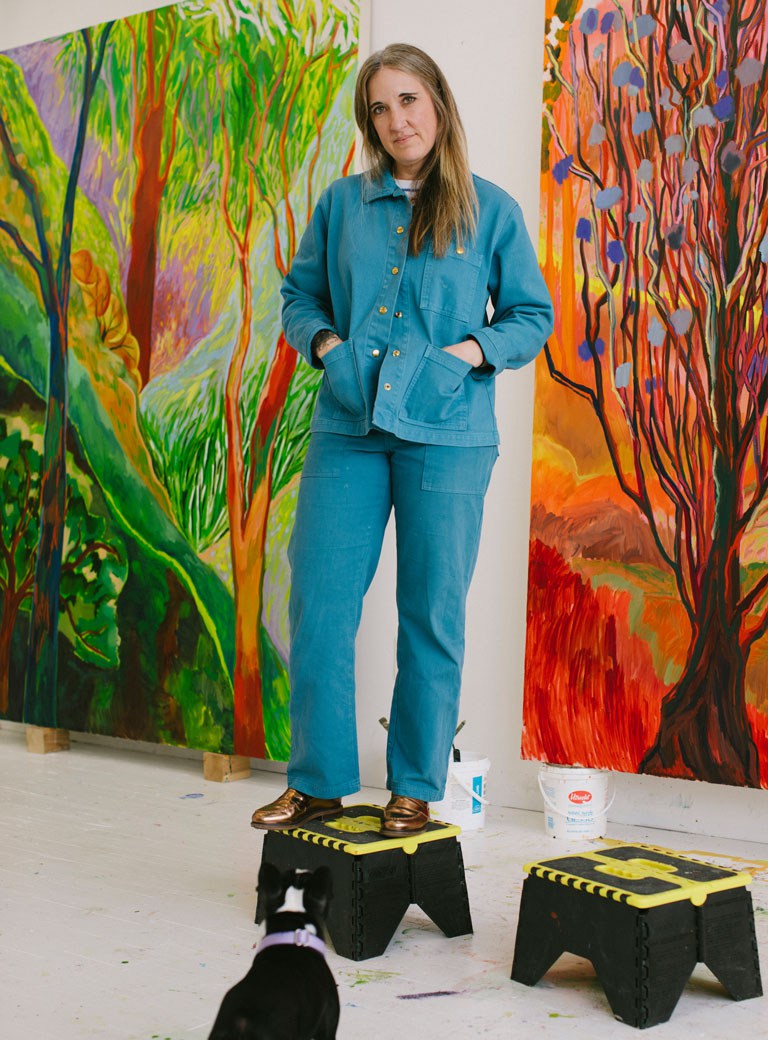
The size of canvases that you are using is also overwhelming – why are they so large?
The larger canvas allows me to provide more information and more space for the viewer to enter. The span of information can get bigger. The world around us keeps going so it makes sense for them to be big. But I like a variety; I do smaller ones as well.
Are they harder?
Yes. I want them to feel big when you look at them and say the same I would in a larger painting. I also do not want them to look like miniature versions. They need to hold the same weight, to be their own work of art.
Almost all your paintings are vertical, right?
99% are vertical – I think that is because I was thinking about windows and doors you can step through into this world. Even when I moved into landscapes, I had this framing mechanism with trees or bushes. It was also as a rebellion against the typical horizontal landscape format.
Stepping into another world – are your paintings an escape?
They can be an escape, but they can also be a way of communicating feelings. I want people to feel a connection because there is a lot of anxiety in the works, as there is in the world today. Through my painting, I get to work out my feelings, and I want to be able to connect via this visual language. It helps me, but I hope it helps other people as well. There is something that feels inviting in my work, but it is difficult at the same time.
Push and pull?
Yes. I think there is a loss of connection today. And for people to see my hand, to understand that a person made this, that my heart is in it. If someone can connect to it – that is really important to me!
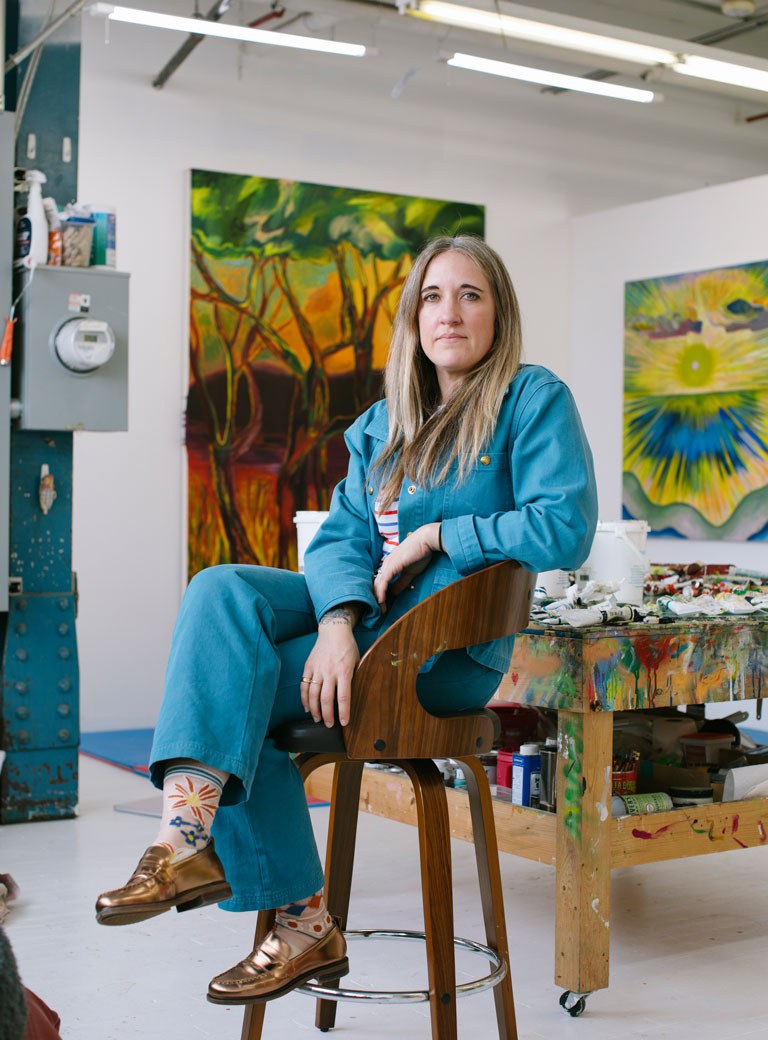
Another way of connection goes through your recent collaboration with fashion house Dior…
It was really cool. They approached me, and of course I was quite intimidated but excited nonetheless. They were very professional. At the end of the day, it was two creatives getting together. I got to cross over into the fashion world for a minute, and that was very fun.
The fashion world is a commercial world, too. Were you worried about your perception as a “serious” artist?
Probably, but at the end I don’t care. I also did a collaboration with dress designer Ulla Johnson recently that turned out so well. As long as it is still within my control, it’s fine as it is fun to cross over into other creative worlds.
But these collaborations might open up more people to your work!
Yes, absolutely. As long it as it is not getting too commercial, it’s another way of reaching out to an audience, and not as much work as making a painting (laughs).
What are your next plans?
My next gallery show will be at Eva Presenhuber in June for the Zurich Art weekend. I will be presenting all new paintings and ceramics. I have a few other exciting museum shows, public projects and collaborations that are on the horizon but have not been announced yet. Stay tuned!
Interview: Alexandra Markl
Photos: Katharina Poblotzki


